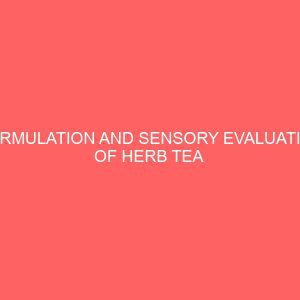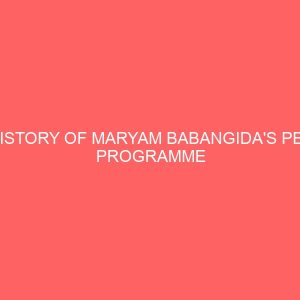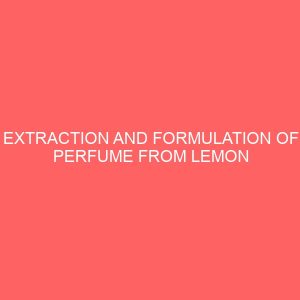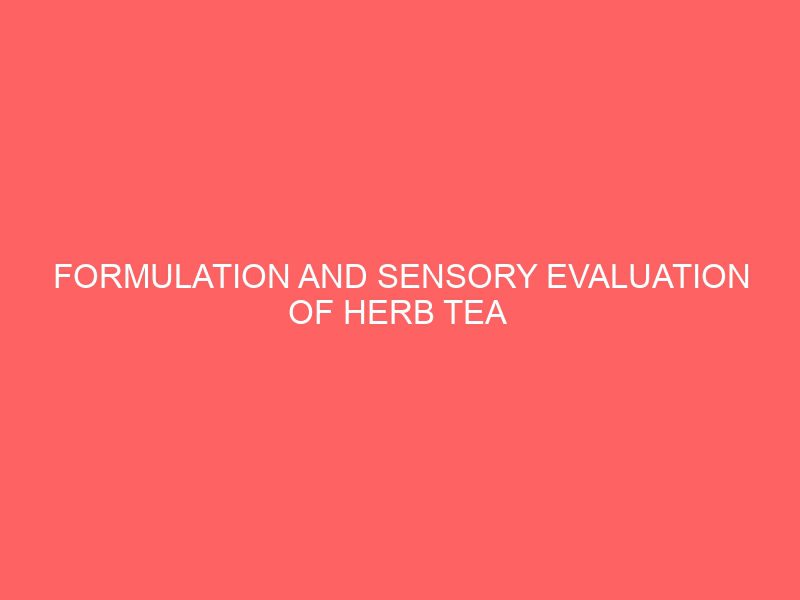Description
CHAPTER ONE
1.0 INTRODUCTION
This research is on Formulation and sensory evaluation of herb tea from moringa oleifera, hibiscus sabdariffa and cymbopogon citratus. The drinking of tea begun in China centuries ago, and has over the years become an inseparable part of most cultures worldwide. Tea is currently the most widely consumed beverage in the world (Schmidt et al., 2005) and therefore ranks as an important world food product. About one tenth of the world production volume of tea is supplied by Kenya which is Africa’s largest producer of tea (International Tea Committee, 1998).
Tea is generally consumed for its attractive aroma and taste as well as the unique place it holds in the culture of many societies. In recent times, there is renewed interest in tea because of growing consumer awareness of health benefits derived from tea consumption (McKay and Blumberg, 2002). Tea therefore belongs to a rapidly expanding market of ‘wellness beverages’ (Byun and Han, 2004).
By definition, tea is an infusion of the leaves or other parts of the evergreen tea plant (Camellia sp). Teas have been traditionally categorized into green, oolong and black teas according to the processing conditions employed during manufacturing (Kirk and Sawyer (1997). In recent times, however, a fourth category, called herb teas, is gaining increasing popularity among consumers. Unlike traditional teas, herb teas are prepared from plants other than Camellia (Bender, 2003)
Tea preparation follows a simple procedure. Hot water (70 °C to 100 °C) is poured over the plant part(s) in a container and allowed to steep for a few minutes (usually 1 – 5 min) after which the plant material, usually contained in a bag, is removed from the container. The temperature of the water used and the duration of steeping affect the ‘strength’ of the tea. Tea is drunk hot, warm or iced. In some cases milk and/or a sweetener such as honey or sucrose may be added before drinking (Hakim et al., 2000).
According to Abbey and Timpo (1990), indigenous herbs are in general heavily underexploited in spite of their huge dietary potential. It is therefore imperative to explore the potential of indigenous plant materials in the development of new herb teas. Three examples of indigenous plants discussed in this thesis are Moringa oleifera (Moringa), Hibiscus sabdariffa (Roselle) and Cymbopogon citratus (Lemon grass).
Moringa is an easily propagated plant which thrives well in harsh environmental conditions. It is increasingly gaining global attention due to an excellent profile of nutrients and antioxidants. Moringa leaf is rich in minerals, amino acids, vitamins and -carotene. It also contains a rare combination of health-promoting antioxidants: zeatin, quercetin, sitosterol, caffeoylquinic acid and kaempferol (Anwar et al., 2007). Currently, there is growing interest in the use of Moringa leaf as an ingredient in the preparation of herb tea. According to unpublished reports, however, herb tea made solely from Moringa is poor in sensory appeal (Source: personal communication). This may probably be due to the absence of distinctive flavour properties. It may therefore be necessary to combine Moringa with other herbs in developing herb teas as a way of improving its sensory appeal. This is crucial because consumers are generally unwilling to buy food with poor sensory appeal, irrespective of health or nutritional benefits (de Cock et al., 2005).
Roselle is an aromatic, astringent herb with multiple food uses including the preparation of beverages. Roselle is known to impart a characteristic reddish colour and sour taste which many consider appealing in beverages (Blench, 1997).
Lemon grass has been a preferred component of many cuisines for centuries because of its excellent aromatic properties. Infusion of lemon grass leaf gives an aromatic drink with a characteristic lemon flavour (Figueirinha et al., 2008).
1.1 MAIN OBJECTIVE
The main objective of the study is to explore alternative uses for Moringa oleifera, Hibiscus sabdariffa and Cymbopogon citratus by blending the three herbs to produce a herb tea with acceptable sensory properties.
1.2 SPECIFIC OBJECTIVES
The specific objectives of the study are:
- To determine chemical composition of dried Moringa oleifera leaves, Hibiscus sabdariffa calyces and Cymbopogon citratus leaves;
- To perform acceptance tests on infusions prepared from blends of the three herbs; and
- To generate descriptive vocabulary that would characterize the sensory properties of herb tea.
1.3 RESEARCH JUSTIFICATION
Developing new herb tea products from indigenous plants will provide novel uses for underutilized plants. It will further provide consumers with new alternatives to traditional teas. Moreover the research will bring to light the potential of the underutilized plants for food product development. The research will broaden understanding of the sensory characteristics and preferences of herb teas in particular and beverages in general. It will further advance research in herb tea product development.








Reviews
There are no reviews yet.